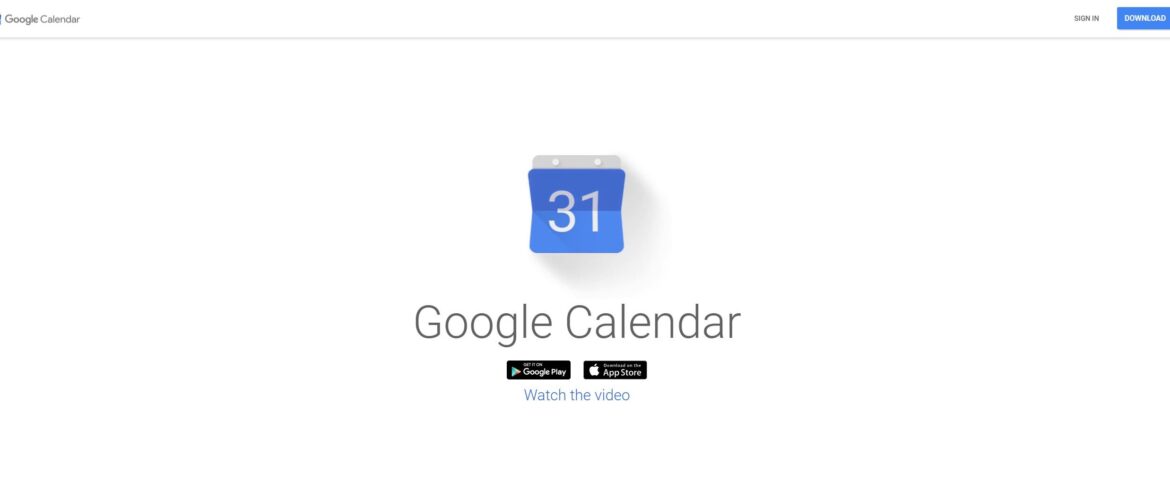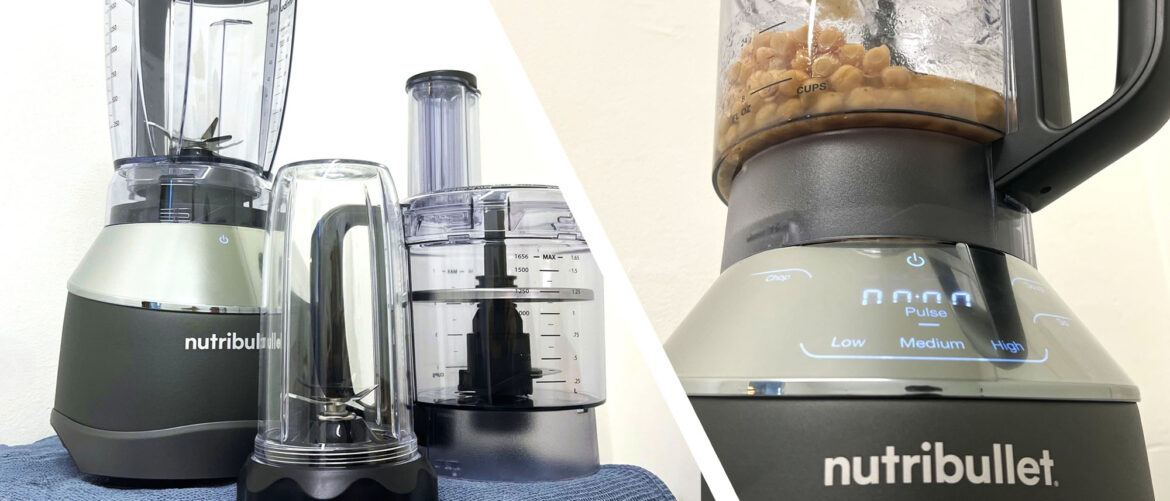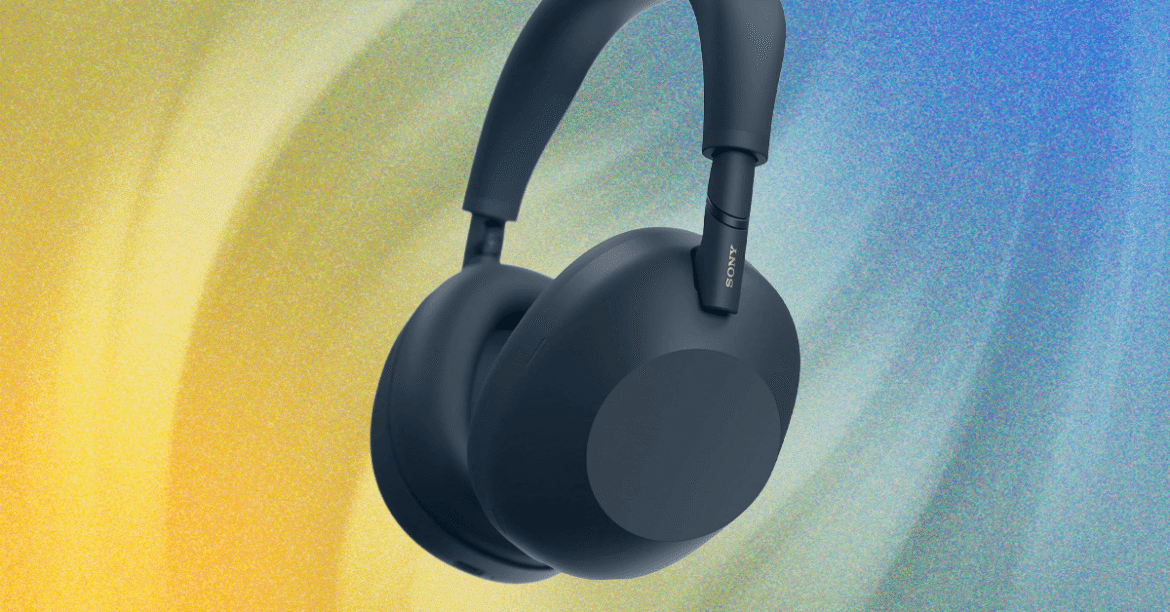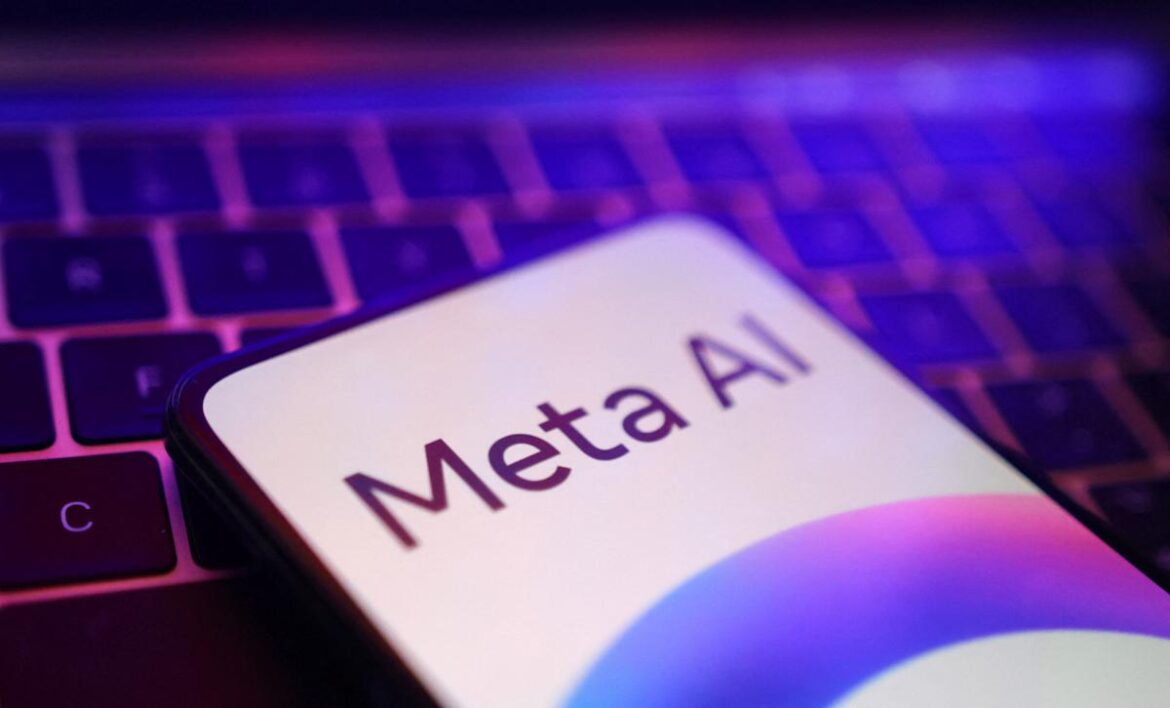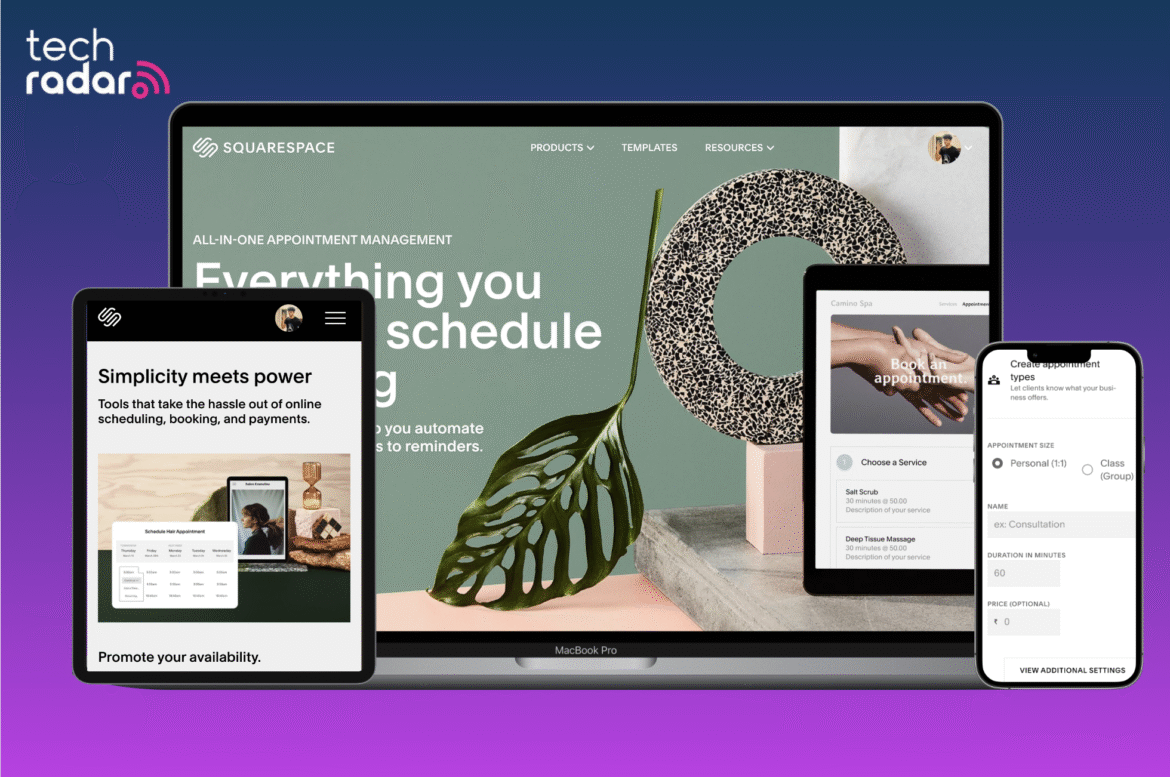Why you can trust TechRadar
We spend hours testing every product or service we review, so you can be sure you’re buying the best. Find out more about how we test.
A digital calendar is one of the most sought-after tools, both for personal and professional use. It helps you plan your schedule ahead of time and adhere to it, instead of juggling random activities, which often leads to confusion. The best calendar apps are a productivity booster, especially in the workplace.
If you need a calendar app, you have an endless list of options to choose from, both free and paid. Google Calendar is one of the top options known for its simplicity and ease of use. I’ve reviewed Google Calendar extensively so that you don’t have to go through the same hassles. Read on to learn about its pros, cons, features, and what sets it apart from the competition.
Google Calendar: Plans and pricing
Google Calendar is a freemium tool. The free version is designed for personal use, unlocking access to a detailed calendar where you can plan your schedule and receive reminders.
However, the free plan lacks the features designed for business use, such as the ability for employees to create appointment booking pages and reserve conference rooms at the office. It also lacks the collaborative features that businesses get when they pay for a Google Workspace plan.
(Image credit: Google)
Google Workspace unlocks access to the premium features of the Calendar app, as well as other tools like Google Docs, Sheets, Slides, and Meet. It’s a single stone that kills multiple birds in corporate settings; companies gain access to many valuable tools that help employees collaborate seamlessly and boost their productivity.
Google Workspace has three pricing plans: Starter, Standard, and Plus. The Starter plan costs $6 per user per month. It unlocks 30 GB of storage for each account and the core features of Google Calendar. However, this plan doesn’t include the ability to create appointment booking pages.
The Standard plan costs $14 per user per month. It provides 2 TB of storage per account, which covers information stored on Google Calendar and other Google apps. This plan unlocks the ability to create appointment booking pages and direct integration with Gemini, Google’s artificial intelligence (AI) assistant. Gemini is very helpful when using Google Calendar, a topic I’ll dive into later.
The Plus plan unlocks access to everything on the Standard plan and upgrades the available storage space to 5 TB per account. There’s no difference in the core Calendar features available in the Plus and Standard plans. Instead, the difference lies in the Plus plan having advanced security features and access to a digital vault for organizations to retain data for an extended period.
There’s notably an Enterprise Plus plan, but without standard pricing. This plan is targeted at large organizations that want to negotiate custom deals with Google’s sales team.
Each Google Workspace plan has a 14-day free trial period that enables you to test its features. You can also use the free Google Calendar app to test the core features and get a good hint of what to expect on a Google Workspace plan.
Google Calendar: Features
Google Calendar is designed as a daily companion where you can record future events and receive reminders when due. You have a calendar with all the future dates, and you can set events on specific dates and choose to receive reminders at particular times.
For example, you can choose to receive a reminder two days before or a day before an event. A reminder will be sent to your email address or via a push notification if you’ve downloaded the Calendar smartphone app.
Google Calendar lets you add many details when creating an event. First, you’ll add the title, location, and time. Then, you can add guests by entering their email addresses, and Google will send them an invitation to the event. If the event happens to be a videoconference or webinar hosted on Google Meet, you can generate a video meeting link that’ll be sent to invitees.
Google Calendar integrates with Gmail, Google Meet, and other Workspace productivity apps (Image credit: Google)
After adding events, you can monitor them easily from your dashboard. Picture a calendar listing all the dates in a year: all the future dates you’ve added events for will be highlighted, and you can click on any date to view the event. You can also switch the calendar view from the whole year to a specific month, week, or day.
What I’ve discussed above are the core Google Calendar features, but there’s much more to the app, especially for paid Google Workspace subscribers. If your business subscribes to Google Workspace, multiple employees can have shared calendars that foster collaboration.
For example, you can create an organization-wide calendar that lets employees keep track of important company events. Any upcoming meetings, holidays, and other events will be posted on this calendar, and each employee will receive reminders.
An assigned administrator can control access to this calendar, i.e., by choosing which accounts can add events to the calendar or can only view existing events. When someone adds an event to the organizational calendar and sets a reminder, all other people with access to the calendar will be notified.
Employees can also share their personal calendars with select colleagues. For instance, a team leader can share a calendar with their subordinates, giving them insight into the team leader’s schedule and the ability to book meetings directly with their team head. Different work teams can create their calendars to keep tabs on each other’s schedules and ensure they don’t set events on conflicting dates.
A memorable feature I used is the Gemini integration. Google unveiled its Gemini artificial intelligence (AI) assistant in 2023, in response to the AI boom spearheaded by OpenAI’s ChatGPT. In 2024, it announced direct Gemini integration with Google tools, including Calendar, for Workspace subscribers.
The integration lets you interact with Gemini directly from your Calendar dashboard instead of using it as a separate app. Gemini can perform many tasks to help you manage your schedule.
For example, I asked Gemini to create events for me rather than spend the time to do everything manually. I asked it about specific events, i.e., “When is [event name] scheduled to be held on the calendar?” This is the tip of the iceberg, as Gemini can do much more. It’s like having a virtual assistant to help you plan your schedule.
Google Calendar can display daily, weekly, or monthly schedules or a list of upcoming events (Image credit: Google)
Users can create appointment booking pages via Google Calendar. Essentially, you’ll create a professional booking page and set your desired dates and time slots for people to book meetings. Colleagues and clients can visit the link and schedule a meeting, and you’ll be notified about every booking.
If you’re a professional who provides consultation services, you can require clients to pay to book a meeting directly from the booking page. This feature works by integrating a Stripe account to accept the payments.
Google Calendar has extensive integrations with other Google tools. For example, the Gmail integration provides a seemingly trivial but valuable feature: When you receive an email about any event, it can be automatically added to your schedule with just a click. Generally, you can convert any email directly into an event on your calendar.
Another example is the integration with Google Chat, which allows multiple people sharing a calendar to chat on the same dashboard. This way, colleagues can chat about calendar-related topics without juggling separate apps or browser tabs.
Google Calendar also has integrations with third-party tools. An example is Slack, a popular business messaging app. The Slack integration enabled me to view upcoming events and receive reminders directly on Slack instead of juggling between it and Google Calendar. I also scheduled meetings directly from Slack, and these meetings were automatically added to my Google Calendar dashboard.
Another third-party integration I tried is Todoist, a well-known task management app. The integration enabled me to sync tasks from Todoist to my Google Calendar dashboard.
I enjoyed using Google Calendar to manage my schedule. It’s not just an effective calendar app but one of the most collaborative ones I’ve used. Other apps may offer more advanced features, but Google Calendar excels at enabling people to create and manage shared calendars. It’s second to none in collaborativeness and simplicity.
(Image credit: Google)
Google Calendar: Interface and Use
Simplicity is a highlight of using Google Calendar. It has a noticeably straightforward interface that is easy to grasp. The homepage is the calendar, and you can sort through it to pick any date. Then, you can add an event to the date and set when to receive the reminder.
After setting events, you can always monitor them from your dashboard, which provides a complete view of your calendar. Click on any date in the calendar, and you’ll see any events set on that date. You can switch the calendar between different views (year, day, week, month, or any specific time frame). All the features are neatly arranged and easy to find in the top and left menus.
You can access Google Calendar from your web browser or download the Android or iOS mobile app. The mobile app makes it more convenient to monitor your schedule on the go, with the same features as the web browser version.
Google Calendar: Support
Google Calendar users have access to ample support resources. As a free user, your main support resource is the official Google Calendar help center, although it’s also useful for paid subscribers.
The official help center contains guides concerning all Calendar features. It’s the first place to consult to troubleshoot any issues with the app. In my case, I faced just a few issues with Google Calendar, mainly learning how to use some complex features. The help center quickly resolved these issues.
There’s also an official help community where you can ask questions and get answers from other Google users. This community provides valuable help for free users facing complex issues.
Paid subscribers can access direct support from Google’s team. The team is available 24/7 via email, live chat, or telephone, and is known for resolving customer issues quickly. While free users don’t have access to this direct support, the Google Calendar help center is sufficient to resolve most issues. Google Calendar’s intuitive interface minimizes the amount of help you’ll need in the first place.
Google Calendar: The competition
Apple Calendar and Calendly are the main Google Calendar competitors I’d like to highlight. Both are robust calendar apps with unique pros and cons when compared to Google Calendar.
Just like Google Calendar is extensively integrated with other Google apps and the Android operating system (which is owned by Alphabet, Google’s parent company), Apple Calendar is extensively integrated with Apple apps and the broader iOS ecosystem.
Apple Calendar is pre-installed on iPhones and has a simple, intuitive design similar to Google Calendar. Calendar data is encrypted, and users have full access to their Calendar when offline. However, Apple Calendar lacks the collaborative features offered on a Google Workspace plan. It’s designed for personal rather than business use.
Calendly is a calendar app designed for businesses to automate many scheduling tasks. It has more advanced appointment scheduling features than Google Calendar, including the ability to handle round-robin scheduling and other complex team scheduling demands. Calendly is also much more customizable and has a broader library of third-party integrations than Google Calendar.
However, Calendly is a more expensive option, considering that you’re paying only for a scheduling tool, unlike a Google Workspace subscription that unlocks both the Calendar app and many other Google tools. Calendly is a good option for large businesses with complex scheduling needs, while Google Calendar is more suitable for small-to-mid-sized firms.
Google Calendar: Final verdict
Google Calendar strikes an ideal balance between functionality, simplicity, and pricing. Given the other tools available as part of a Google Workspace subscription, it’s a cost-effective option for small to mid-sized businesses, enabling them to manage schedules effectively and ensure employees stay on the same page.
Google Calendar doesn’t have the most advanced features, but it’s sufficient for day-to-day schedule management, and the intuitive interface makes it a good choice for companies across diverse industries.
We’ve also featured the best calendar apps and the best productivity tools

